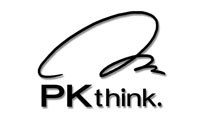At the top of the classification ladder are the 400-Series King's Highways. These roads are almost exclusively controlled access freeways, and are relatively few in number (15 in total, counting the Queen Elizabeth Way & 407 Express Toll Route). These important routes form the backbone of Ontario's road infrastructure, and are being expanded constantly to meet the needs of Ontario's economy. They are numbered from 400 through 427, plus the Queen Elizabeth Way (QEW) which does not have a posted route number. In recent years, these 400-Series Highways have been numbered according to other highways lying adjacent to them. The 407, 410, 416, 417, 420 & 427 all adopted their route numbers from another highway that was bypassed by the 400-Series route. The 407 Express Toll Route (ETR) is technically not a provincial highway. The toll road is operated and maintained by the private sector, but the land that the highway occupies is owned by the Ontario Government and leased out to 407 ETR. However, the 407 ETR was originally designed and built as a standard 400-Series King's Highway, so it has been included in this group.
With only one exception, all 400-Series King's Highways are at least four lanes wide, and are divided roadways. However, many of the 400-Series Highways have more than four traffic lanes. In fact, one portion of Hwy 401 through Toronto is actually 18 lanes wide (9 lanes per direction), configured in a complex freeway collector-express lane system. In some instances, a 400-Series Highway is built as a "staged freeway" with only two traffic lanes provided initially. However, these staged freeways are built in such a way that conversion to a four-lane divided highway facility can be done without much difficulty. Currently, the only two-lane staged freeway left on the 400-Series Highways is a section of Hwy 406 between Port Robinson Road and East Main Street in Welland. This highway was originally built as an undivided two-lane roadway, but will be widened to a four-lane divided highway at some point in the future. Staged freeways are becoming very uncommon in Ontario, as the Ontario Ministry of Transportation (MTO) generally finds it more economical to construct the highway with a four-lane cross section right from the project's onset.
The 400-Series Highways have the highest geometric design standards out of all of Ontario's Highways. All of the routes have been designed as freeways, even though some routes were originally constructed as staged freeways. Design speeds normally range from 100 km/h to 130 km/h, with horizontal and vertical curve standards that are superior to those standards used on conventional two-lane King's Highways. The primary function of the 400-Series Highways is to accommodate through traffic. The 400-Series Highways feature full grade separation at practically all intersecting roads and railway lines. Interchanges are provided along the 400-Series Highways to connect surface roads to the freeways. Interchange ramp geometry varies considerably throughout the province. Ramps at older interchanges, or ramps that carry very light traffic volumes, normally exhibit somewhat lower design standards. Conversely, high-volume ramps, particularly freeway-to-freeway ramps, or ramps that carry a large percentage of buses and trucks, are normally designed to much higher standards.
Nearly all 400-Series Freeways have a posted speed limit of 100 km/h (62 mph). One exception is Hwy 406 from Fourth Avenue to Westchester Avenue and from Port Robinson Road to East Main Street in the St. Catharines area. These two sections of Hwy 406 have a posted speed limit of 80 km/h, while the balance of the highway is posted at 100 km/h. A section of Hwy 403 from Hwy 6 North to Aberdeen Avenue in Hamilton has a posted speed limit of 90 km/h. Reduced speed limits have also been imposed along the approaches to the International Bridges at the ends of the QEW, Hwy 402, Hwy 405 and Hwy 420. The speed limit has also been reduced to 80 km/h on Hwy 401 from Dougall Parkway (Formerly Hwy 3B) westerly to the end of the freeway at Talbot Road (Hwy 3). Recently, the approach to Pearson International Airport on Hwy 409 in Toronto was reduced to 60 km/h.
The 400-Series Highways are marked using the same basic black-and-white crown-shaped highway markers that are used on conventional King's Highways. Overhead freeway signs are now becoming much more common, particularly in urban areas where there are large numbers of closely-spaced interchanges.







